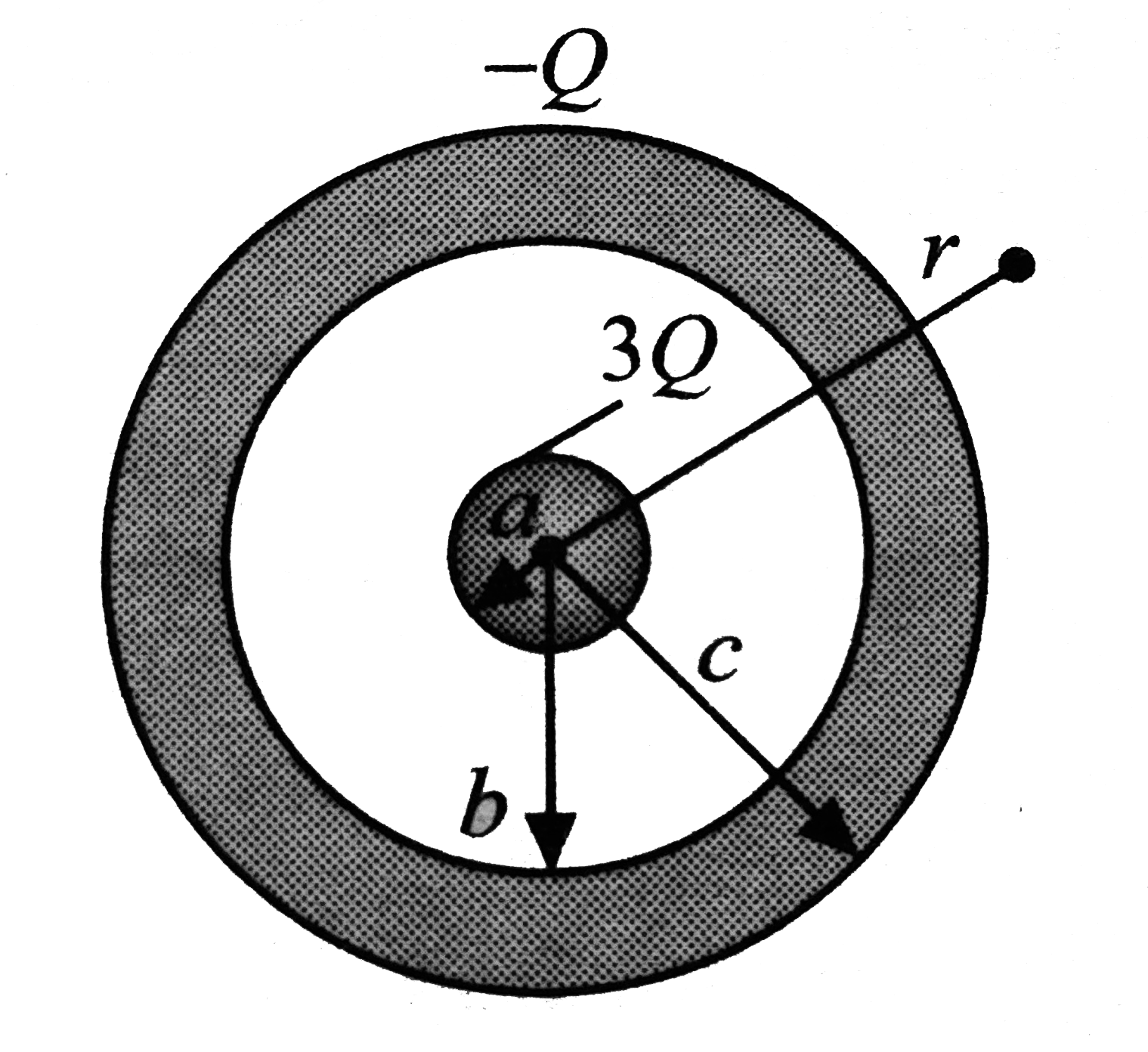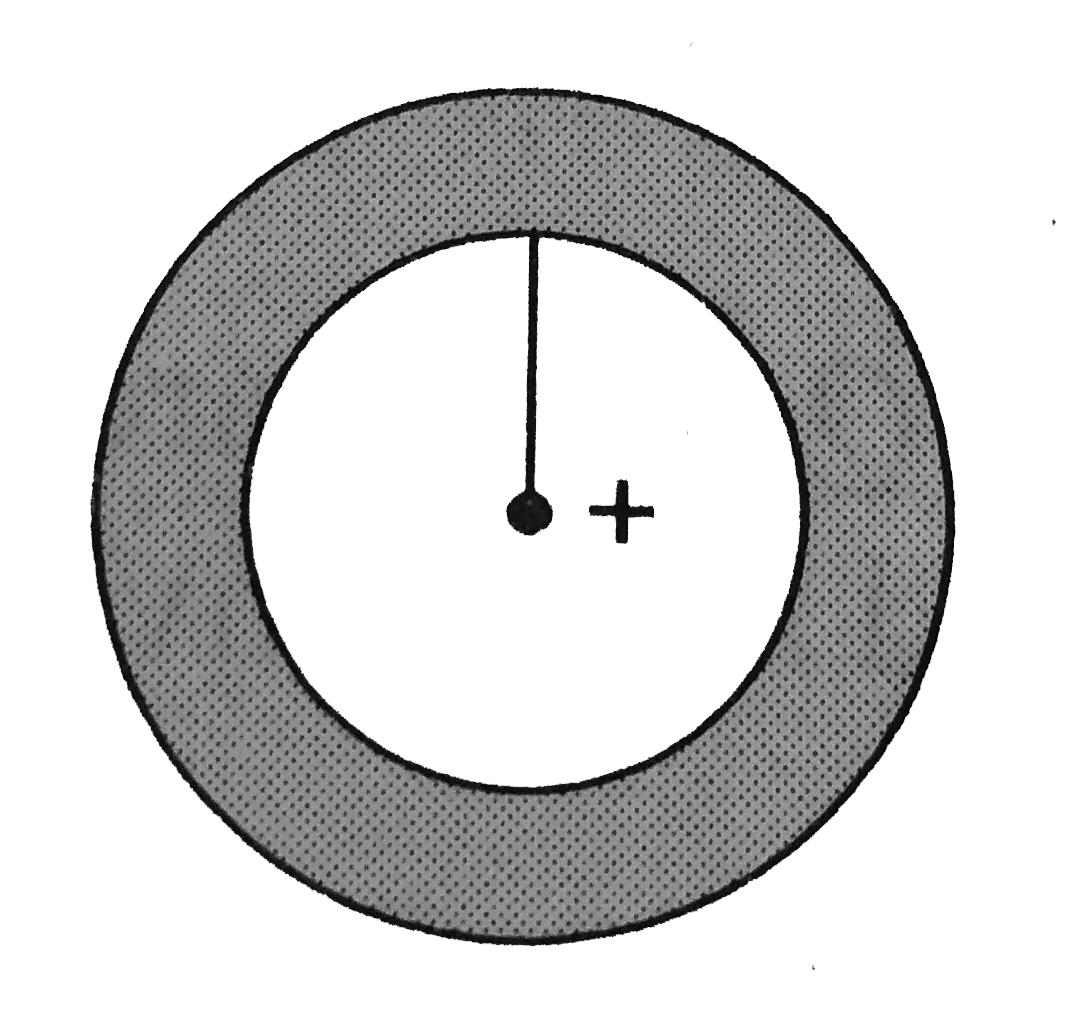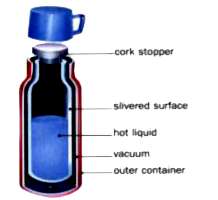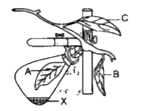A leafy shoot is enclosed air tightly in a flask. The flask become moist on the inner surface due to
Guttation
Evaporation
Transpiration
Cooling effect
The correct Answer is:C
Step-by-Step Solution:
1. Understanding the Situation: A leafy shoot is enclosed in a flask, and after some time, the inner surface of the flask becomes moist. This indicates that there is some form of water movement or change occurring.
2. Identifying Possible Processes: The options provided are:
- Guttation
- Evaporation
- Transpiration
- Cooling effect
3. Analyzing Guttation: Guttation is the process where water droplets are exuded from the tips or margins of leaves through specialized structures called hydathodes. This does not apply here as we are observing moisture on the flask's inner surface, not on the leaves themselves.
4. Analyzing Evaporation: Evaporation is the process where liquid water changes into vapor. While this could contribute to moisture, it does not explain why the inner surface of the flask becomes moist specifically due to the leafy shoot.
5. Analyzing Transpiration: Transpiration is the process by which water vapor is lost from the plant through small openings called stomata. When the water vapor released from the leaves comes into contact with the cooler glass of the flask, it condenses into water droplets, leading to the moist inner surface of the flask.
6. Analyzing Cooling Effect: The cooling effect refers to the temperature drop that occurs when vapor condenses into liquid. While this is a consequence of transpiration, it does not directly explain the moisture formation.
7. Conclusion: The correct answer to the question is that the flask becomes moist on the inner surface due to transpiration.
Final Answer:
The flask becomes moist on the inner surface due to transpiration.
---
- Guttation
- Evaporation
- Transpiration
- Cooling effect
The flask becomes moist on the inner surface due to transpiration.
Topper's Solved these Questions
- TRANSPORT IN PLANTSBOOK - DINESH PUBLICATION ENGLISHCHAPTER - TRANSPORT IN PLANTSEXERCISE - REVISION QUESTIONS FROM COMPETITIVE EXAMS
425 Videos
- TRANSPORT IN PLANTSBOOK - DINESH PUBLICATION ENGLISHCHAPTER - TRANSPORT IN PLANTSEXERCISE - CHECK YOUR GRASP
40 Videos
- THE LIVING WORLDBOOK - DINESH PUBLICATION ENGLISHCHAPTER - THE LIVING WORLDEXERCISE - Check your grasp
12 Videos
- VERTEBRATA-AGNATHA AND PISCESBOOK - DINESH PUBLICATION ENGLISHCHAPTER - VERTEBRATA-AGNATHA AND PISCESEXERCISE - Check Your Grasp
12 Videos
Similar Questions
A solid insulating sphere of radius a carries a net positive charge 3Q, uniformly distributed throughout its volume. Concentric with this sphere is a conducting spherical shell with inner radius b and outer radius c and having a net charge -Q, as shown in figure

a. Consider a spherical Gaussian surface of radius rgtc, the net charge enclosed by this surface is .............
b. The direction of the electric field rgtc is .............
c. The electric field at rgtc is ............... .
d. The electric field in the region with radius r, which cgtrgtb, is ...............
e. Consider a spherical Gaussian surface of radius r, where c>r>b, the net charge enclosed by this surface is ................ .
f. Consider a spherical Gaussian surface of radius r, whereb>r>a, the net charge enclosed by this surface is ................. .
g. The electric field in the region b>r>a is ................ .
h. Consider a spherical Gaussian surface of radius r<a. Find an expression for the net charge Q(r) enclosed by this surface as a function of r. Note that the charge inside the surface is less than 3Q.
i. The electric field in the region r<a is ................. .
j. The charge on the inner surface of the conducting shell is .......... .
k. The charge on the outer surface of the conducting shell is .............. .
l. Make a plot of the magnitude of the electric field versus r.
View SolutionWhen wine is exposed to air it becomes sour due to
View SolutionA flask contains three times as many moles of H2 gas as it does O2 gas. If hydrogen and oxygen are the only gases present, what is the total pressure in the flask if the partial pressure due to oxygen is P?
View SolutionA point source of light is placed at the centre of curvature of a hemispherical surface. The radius of curvature is r and the inner surface is completely reflecting. Find the force on the hemisphere due to the light falling on its if the source emits a power W.
View SolutionAn electrically isolated hollow (initially uncharged), conducting sphere has a small positively charged ball suspended by an insulating rod from its inside surface, see diagram

This causes the inner surface of the sphere to become negatively charged. When the ball is centred in the sphere the electric field outside the conducting spehere is
View SolutionA hollow sphere of glass of R.I .n has small mark M on its interior surface which is observed by an observer O from a point outside the sphere, .C is centre of the sphere. The inner cavity (air) is concentric with the external surface and thickness of the glass is every where equal to the radius of the inner surface. Find the distance by which the mark will appear nearer than it really is in terms of n and R assuming paraxial rays.
_E01_156_Q01.png)
View SolutionLook at the picture of the thermos flask and answer the following question

The outer surface of the inner wall of a thermos flask has a very shiny surface. What effect will this have on heat escaping from a hot liquid inside a thermos flask?
View SolutionAt resting stage charge of inner surface is due to presence of
View SolutionWhen 2g of gas A is introduced into an evacuated flask kept at 25∘C the presusre is found to be 1atm. If 3g of another gas B is then added to the same flask the total pressure becomes 1.5atm. The ratio of molecular weights M A : M B .
View SolutionThe diagram below represents an experiment to demonstrate a particular aspect of a physiological process in plants. Study the diagram and answer the questions that follows:

What is the chemical substance named X in the diagram? What is the special condition created inside the flask due to the presence of the substance X?
View Solution
